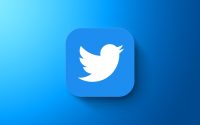Inflation Confirmed Jumping Of Consumer Spending
The Federal Reserve’s preferred inflation gauge rose 5.4% in February, the highest rate since 1983. The core personal consumption expenditure price index increased by 4.7% from last year, indicating a higher cost of living for consumers. The Fed aims for an annual inflation rate of 2%, but the current readings are significantly higher than the target. “Inflation is too high,” the Fed said in response to the news.
What Does This Inflation Mean for the Economy?
This sudden rise in inflation has raised alarms among many economists, who point out that the Fed’s official inflation target is 2%. The central bank has expressed concern about the situation, with Fed Chair Jerome Powell saying, “Inflation is too high.” The Fed may need further action to rein in inflation and protect the US economy.
Analysis of the Data
The Fed’s preferred inflation gauge rose 5.4% in February, which is the highest it has been since 1983. It indicates that prices have increased, and consumers have had to pay more for goods and services. In the Core PCE index, which excludes the often volatile food and energy categories, prices increased by 0.6%, reflecting a considerable increase in consumer costs. The Personal Consumption Expenditures (PCE) price index rose 5.4% from a year ago, the most significant increase in nearly 40 years.
The Impact of High Inflation
High inflation can have several negative impacts on the economy. Firstly, it erodes the purchasing power of individuals, as prices for goods and services increase faster than wages, and they struggle to make ends meet, which lowers consumer spending. High inflation also increases the risk of deflation, as businesses and households may become less willing to invest or purchase goods and services if they expect prices to fall. Lastly, high inflation can cause uncertainty and instability in the markets, as investors may not know what to expect for prices and returns.
The Fed’s preferred inflation gauge rose 5.4%, the highest since 1983. It indicates that prices are rising steadily, and consumers face a higher cost of living. The Fed aims for an annual inflation rate of 2%, but the current numbers are significantly higher than the target. It could negatively impact the economy, including eroding purchasing power, increasing the risk of deflation, and creating market uncertainty. Therefore, the Fed must address this issue to ensure stable economic growth.



